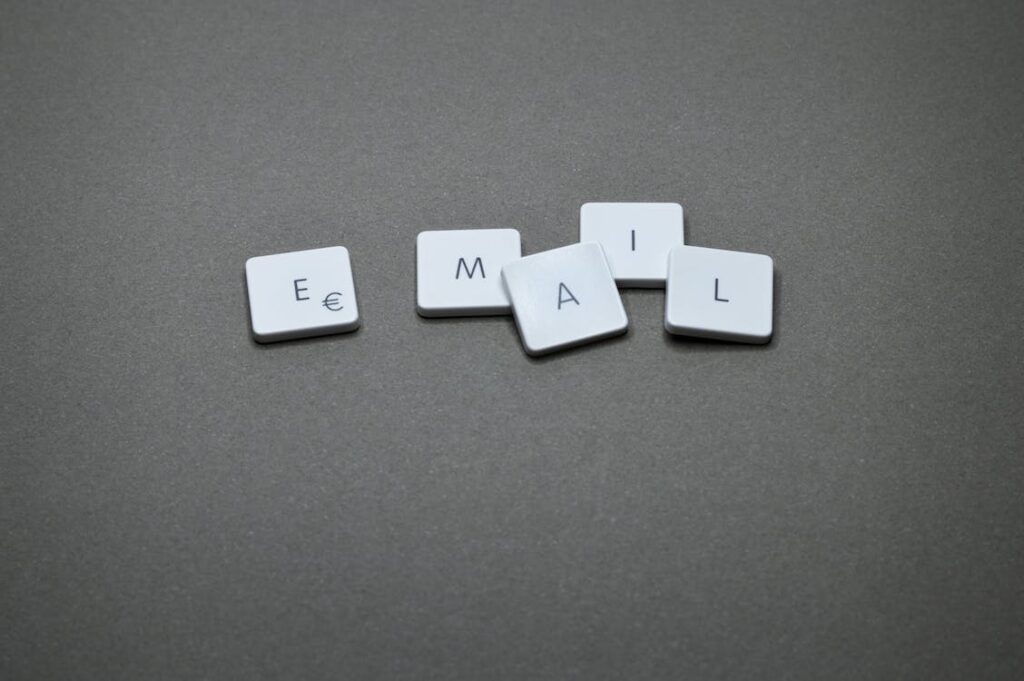Welcome to our in-depth exploration of two of the most talked-about email marketing tools for 2024: HubSpot Email Marketing and Zoho Campaigns. Whether you’re a small business owner, a marketing professional, or just keen on understanding the evolving landscape of email marketing tools, this article promises to guide you through. We’re going to dissect, compare, and analyze these platforms using a straightforward, conversational tone. Let’s embark on this journey to find out which tool could be your ace in the world of email marketing for 2024.
| HubSpot Email Marketing | Zoho Campaigns |
|---|---|
 |  |
| G2 Score – 4.4 out of 5 stars | G2 Score – 4.2 out of 5 stars |
| TrustRadius Score – 8.5 out of 10 | TrustRadius Score – 7.9 out of 10 |
User Interface and Ease of Use: The Gateway to Email Marketing Efficiency
The first thing to consider when choosing an email marketing tool is its user interface and ease of use. After all, a tool, no matter how powerful, is ineffective if it’s not user-friendly. Let’s compare HubSpot and Zoho Campaigns on these aspects.
HubSpot Email Marketing: Intuitive and User-Centric
HubSpot is known for its clean, intuitive interface, designed to be user-friendly for marketers at all levels. The platform offers a straightforward dashboard that neatly organizes all its features, making navigation a breeze. For beginners, this ease of use is a significant relief, removing the intimidation often associated with complex marketing tools.
When it comes to creating emails, HubSpot’s drag-and-drop email builder stands out. It allows you to effortlessly design professional-looking emails without needing a background in graphic design or coding. This simplicity extends to its other features like contact management, campaign tracking, and analytics, all intuitively laid out and easy to access.
However, given its extensive range of features beyond email marketing, new users might initially feel a bit overwhelmed. But, with a bit of exploration, it quickly becomes clear how these features integrate and complement each other.
Zoho Campaigns: Straightforward with a Focus on Functionality
Zoho Campaigns, part of the larger suite of Zoho applications, prides itself on offering a no-frills, functional user interface. The platform is straightforward, focusing more on functionality than aesthetic frills. This approach is particularly appealing to those who prefer a more traditional, utilitarian layout over modern, design-centric interfaces.
The email editor in Zoho Campaigns is efficient and gets the job done. It offers a range of templates and a drag-and-drop editor, though it might not be as polished as HubSpot’s. The platform shines in its straightforward approach to campaign creation, segmentation, and reporting, making it a solid choice for businesses that want an uncomplicated yet effective email marketing tool.
While Zoho Campaigns may lack some of the advanced features and integrations of HubSpot, its simplicity makes it a strong contender for small businesses or those who are new to email marketing and want a tool that’s easy to learn and quick to implement.
In the battle of user interfaces and ease of use, both HubSpot and Zoho Campaigns have their strengths. HubSpot offers a more modern, intuitive experience with a wide range of integrated features, while Zoho Campaigns focuses on straightforward functionality, appealing to those who value simplicity and ease of use.
Automation and Personalization: Enhancing Engagement and Efficiency
In the realm of email marketing, the power of automation and personalization cannot be overstated. They are key to creating targeted, relevant, and timely campaigns. Let’s delve into how HubSpot and Zoho Campaigns handle these critical features.
HubSpot Email Marketing: Advanced Automation with Deep Personalization
HubSpot is renowned for its sophisticated automation capabilities. The platform enables you to create complex, multi-step email workflows that can be triggered by various user actions, such as website visits, email interactions, or form submissions. This level of automation ensures that you can deliver the right message at the right time without manual intervention.
Personalization in HubSpot goes beyond using the recipient’s name in an email. You can tailor content based on a wide range of customer data points, collected and managed within its integrated CRM system. This deep level of personalization allows for highly relevant and engaging email campaigns that resonate with individual recipients, significantly boosting engagement and conversion rates.
However, the depth of HubSpot’s automation and personalization features might require a learning curve, especially for beginners or smaller teams without a dedicated marketing specialist.
Zoho Campaigns: Streamlined Automation for Effective Communication
Zoho Campaigns offers a more streamlined approach to automation. It allows you to set up basic automated email sequences, such as welcome series, birthday emails, and follow-ups based on customer actions. While not as advanced as HubSpot’s, these automation features cover the essential needs of most small to medium-sized businesses.
In terms of personalization, Zoho Campaigns provides the capability to customize emails based on subscriber data. You can insert dynamic content, such as names or purchase history, into your emails. This ensures that your messages have a personal touch, increasing the likelihood of engagement.
While Zoho Campaigns’ automation and personalization capabilities are robust and sufficient for many businesses, they may not offer the same level of intricacy and integration as HubSpot.
HubSpot offers a more comprehensive and sophisticated solution for automation and personalization, suitable for businesses looking for detailed, data-driven campaign strategies. Zoho Campaigns, on the other hand, provides practical and accessible automation tools, ideal for businesses seeking simplicity and effectiveness in their email marketing efforts.
Analytics and Reporting: Measuring Success and Refining Strategies
Analytics and reporting capabilities are crucial in any email marketing tool, allowing you to gauge the effectiveness of your campaigns and make data-driven decisions. Let’s compare how HubSpot and Zoho Campaigns stack up in providing insights into your email marketing efforts.
HubSpot Email Marketing: Comprehensive Analytics for In-Depth Insights
HubSpot’s strength lies in its comprehensive analytics, which offer a deep dive into the performance of your email campaigns. The platform provides detailed reports on key metrics such as open rates, click-through rates, bounce rates, and more. But HubSpot goes beyond these basic metrics, offering insights into how your email campaigns are impacting your overall marketing goals and sales funnel.
With HubSpot, you can track the customer journey, understanding how each email contributes to conversions and customer engagement. This level of detail is invaluable for fine-tuning your strategies and ensuring that your emails are not just seen, but also effectively contributing to your business objectives.
However, the depth and complexity of HubSpot’s analytics might be overwhelming for some, particularly smaller businesses or those without dedicated analytics teams.
Zoho Campaigns: Targeted Analytics for Practical Insights
Zoho Campaigns offers a more straightforward approach to analytics. It covers all the essential metrics you’d expect, such as open rates, click rates, and unsubscribes, presented in an easy-to-understand format. This makes it accessible for businesses of all sizes, especially those without specialized expertise in data analysis.
The platform also provides insights into subscriber behavior, allowing you to understand how different segments of your audience interact with your emails. These insights are practical and actionable, enabling you to make quick adjustments to improve your campaign performance.
While Zoho Campaigns’ analytics are comprehensive enough for most email marketing needs, they may not offer the same level of depth and integration with other marketing data as HubSpot’s.
In terms of analytics and reporting, HubSpot stands out for businesses that need detailed, integrated insights into their email campaigns and broader marketing efforts. Zoho Campaigns, with its straightforward and focused reporting, is more suited for those who need quick and easy-to-understand insights into their email marketing performance.

Related: Check out our free SEO suite

Integration Capabilities: Expanding Your Marketing Toolbox
Integration capabilities are a key aspect of any email marketing tool, determining how well it can sync with other software and services. This compatibility can significantly boost your marketing efficiency. Let’s compare the integration capabilities of HubSpot and Zoho Campaigns.
HubSpot Email Marketing: A Vast Network of Integrations
HubSpot is known for its vast array of integrations, making it a highly versatile tool in your marketing arsenal. As part of a broader marketing ecosystem, HubSpot seamlessly integrates with numerous CRM systems, social media platforms, content management systems, and other marketing tools. The HubSpot App Marketplace hosts a rich selection of integrations, catering to various business needs and functions.
These integrations enable a more cohesive marketing strategy, allowing data to flow freely between different tools and platforms. For businesses that rely on a variety of software solutions, this level of integration ensures that all marketing efforts are informed by consistent and comprehensive data.
The downside is that the sheer number of available integrations can be overwhelming, and setting them up might require some technical expertise.
Zoho Campaigns: Targeted Integrations within the Zoho Ecosystem
Zoho Campaigns offers a focused set of integrations, primarily within the Zoho ecosystem. It integrates smoothly with other Zoho products, such as Zoho CRM, Zoho Books, and Zoho Desk, allowing businesses using multiple Zoho applications to benefit from streamlined data sharing and functionality.
In addition to Zoho integrations, Zoho Campaigns connects with popular third-party applications and services, enhancing its email marketing capabilities. However, the range of third-party integrations is more limited compared to HubSpot.
In terms of integration capabilities, HubSpot offers a broader and more diverse range of options, suitable for businesses looking for extensive integration with a variety of platforms. Zoho Campaigns, on the other hand, is ideal for users already within the Zoho ecosystem or those who need a more straightforward set of integrations.
Pricing and Value for Money: Balancing Cost and Features
When selecting an email marketing tool, understanding the pricing structure and assessing the value you get for your investment is crucial. Let’s delve into how HubSpot and Zoho Campaigns fare in terms of pricing and the value they offer for the cost.
| HubSpot Email Marketing | HubSpot’s email marketing tool is part of the HubSpot Marketing Hub, which offers the following plans: Free Tools: Basic email marketing features with HubSpot branding. Starter Plan: Starting at $45/month, includes email marketing, ad management, landing pages, forms, and more. Professional Plan: Starting at $800/month, offers advanced marketing automation, smart content, and A/B testing. Enterprise Plan: Starting at $3,200/month, adds features like adaptive testing, advanced reporting, and custom event triggers. |
| Zoho Campaigns | Email-based Plan: Starting at approximately $3/month for up to 500 subscribers and unlimited emails. The price scales with the number of subscribers. Subscriber-based Plan: Starting at around $5/month for up to 500 subscribers (with unlimited emails). The cost increases with more subscribers. Pay by Email Credits: Suitable for infrequent senders. Purchase email credits that don’t expire; prices depend on the volume of credits bought. High Volume Plans: Custom pricing for large volume senders, offering advanced features and dedicated support. |
HubSpot Email Marketing: A Premium Offering with Extensive Features
HubSpot operates on a tiered pricing model, designed to cater to businesses of various sizes and needs. While it’s known for being on the premium side, the cost is justified by the comprehensive range of features it offers. Even the basic plans include a solid set of tools, not limited to email marketing but extending to CRM functionalities, social media management, and more.
As your business grows and your needs become more sophisticated, you can scale up to more advanced plans. These higher-tier plans provide additional features like enhanced automation, deeper analytics, and increased customization options. HubSpot is a significant investment, but for businesses seeking an all-encompassing marketing solution, it offers substantial value.
Zoho Campaigns: Cost-Effective Solution for Small to Medium Businesses
Zoho Campaigns presents a more budget-friendly pricing structure, making it an attractive option for small to medium-sized businesses. The platform offers a free plan with basic features, which is great for businesses just starting out with email marketing. As your needs grow, you can opt for their paid plans, which are still competitively priced compared to many other tools in the market.
The paid plans of Zoho Campaigns include advanced features like autoresponders, segmentation, and multi-user access. While it may not offer the breadth of features that HubSpot does, its pricing model provides a good balance of functionality and affordability for businesses focusing primarily on email marketing.
In terms of pricing and value for money, HubSpot and Zoho Campaigns cater to different segments of the market. HubSpot is a more comprehensive, premium-priced solution, ideal for businesses that require a wide range of marketing tools and have the budget for it. Zoho Campaigns offers a more affordable solution, suited for small to medium-sized businesses or those who need a straightforward, efficient email marketing tool.
Customization and Template Options: Crafting Your Emails
The ability to customize emails and access a variety of templates is essential for creating engaging and visually appealing email campaigns. Let’s see how HubSpot and Zoho Campaigns compare in terms of their customization capabilities and template offerings.
HubSpot Email Marketing: Versatile Customization with a Wealth of Templates
HubSpot stands out for its extensive range of customizable email templates. Whether you’re crafting a newsletter, promotional email, or a transactional message, HubSpot has a template for virtually every need. These templates are not only numerous but also highly customizable, allowing you to align them perfectly with your brand’s style and messaging.
The platform’s email editor is intuitive, featuring a drag-and-drop interface that makes customization easy for users of all skill levels. You can modify layouts, add elements like CTA buttons and images, and adjust colors and fonts without needing any coding knowledge. For those who require more advanced customization, HubSpot also supports HTML editing.
Zoho Campaigns: Functional Customization with a Practical Template Selection
Zoho Campaigns offers a solid selection of email templates, catering to various campaign types. While the number of templates might not be as extensive as HubSpot’s, they cover the essentials and are quite functional for most email marketing needs. The templates are customizable, allowing you to tweak designs to suit your branding.
The email editor in Zoho Campaigns is user-friendly, providing a straightforward customization experience. You can easily modify template layouts, insert images, and change colors and fonts to create personalized emails. The platform also supports HTML editing for users who prefer to build their emails from scratch or need specific customizations beyond the provided templates.
In the realm of customization and templates, HubSpot offers a more extensive and versatile range, making it ideal for businesses seeking a variety of design options and high-level customization capabilities. Zoho Campaigns, with its practical and sufficient template selection, is well-suited for businesses looking for functionality and ease of use in their email designs.
Conclusion:
In conclusion, choosing between HubSpot Email Marketing and Zoho Campaigns for your 2024 email marketing needs depends on your specific business requirements and goals. HubSpot stands out with its comprehensive, all-in-one marketing platform, offering extensive customization options, advanced automation, in-depth analytics, and a wide range of integrations. It’s ideal for businesses seeking a robust, feature-rich solution that extends beyond email marketing.
Zoho Campaigns, on the other hand, offers a more budget-friendly, straightforward solution, focusing on essential email marketing functionalities. With its practical set of features, ease of use, and efficient customization options, it is well-suited for small to medium-sized businesses or those who prioritize simplicity and functionality in their email marketing efforts. Ultimately, whether you choose HubSpot for its comprehensive suite of tools or Zoho Campaigns for its focused and cost-effective approach, both platforms offer strong capabilities to enhance your email marketing strategy in 2024.
Read Next
- ConvertKit vs Klaviyo: The Best Email Marketing Tool for 2024
- ConvertKit vs Omnisend: The Best Email Marketing Tool for 2024
- ConvertKit vs Moosend: The Best Email Marketing Tool for 2024
- ConvertKit vs Mailjet: The Best Email Marketing Tool for 2024
- ConvertKit vs Benchmark Email: The Best Email Marketing Tool for 2024






















Comments are closed.